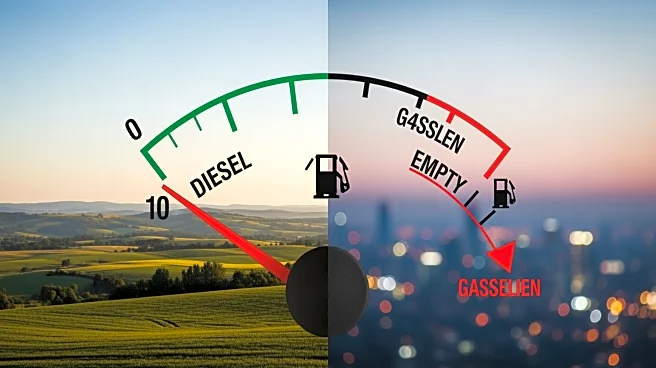What's Happening?
Diesel prices have risen across most regions in the United States, with the national average increasing by 4 cents to $3.753 per gallon, according to the U.S. Energy Information Administration (EIA). The Midwest experienced the largest increase, with prices rising
by 6 cents. In contrast, gasoline prices have decreased by 2 cents, bringing the national average to $3.019 per gallon. The price changes reflect regional variations, with the East Coast, Gulf Coast, and West Coast all seeing increases in diesel prices, while the Rocky Mountain region experienced a slight decrease.
Why It's Important?
The fluctuation in fuel prices has significant implications for the transportation and logistics industries, which rely heavily on diesel. Rising diesel costs can increase operational expenses for trucking companies, potentially leading to higher shipping costs for goods. Conversely, the decrease in gasoline prices may provide some relief to consumers and businesses that depend on gasoline-powered vehicles. These price trends can influence economic activity, consumer spending, and inflation rates, impacting various sectors of the economy.
What's Next?
If diesel prices continue to rise, trucking companies may need to adjust their pricing strategies or seek cost-saving measures to maintain profitability. The ongoing changes in fuel prices could also prompt discussions among policymakers and industry leaders about energy policies and the transition to alternative fuels. Monitoring these trends will be crucial for businesses and consumers to adapt to the evolving economic landscape.













